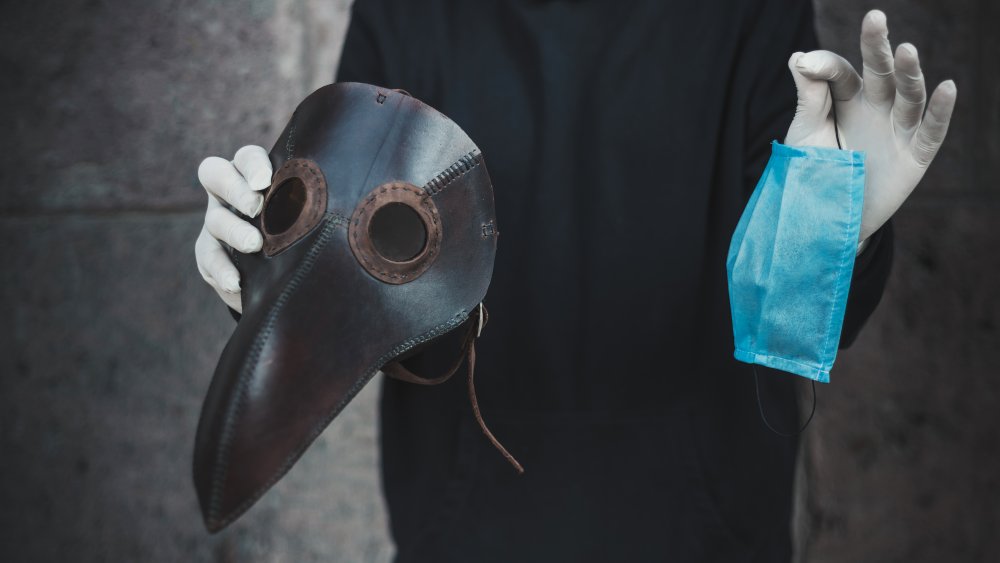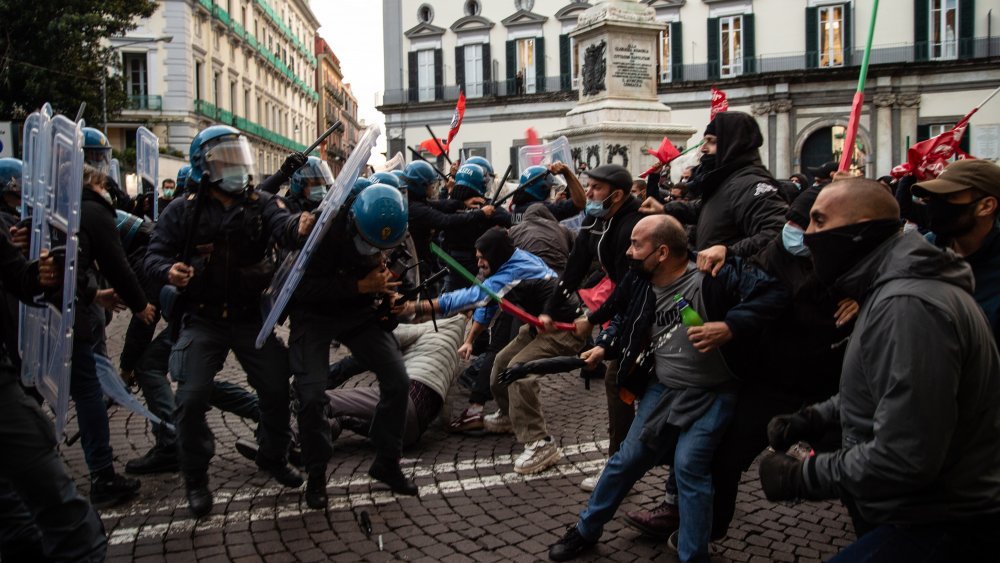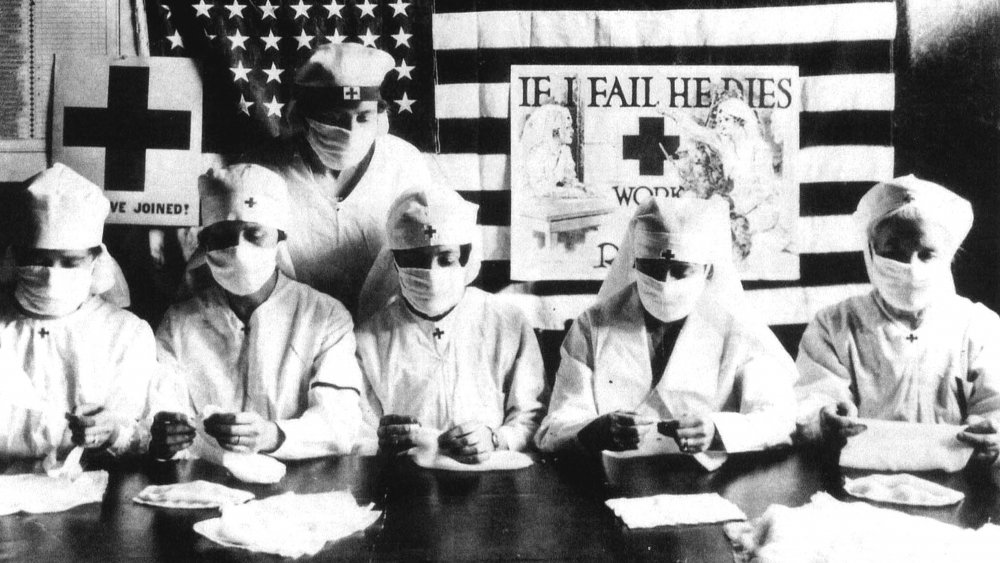Outbreaks That Led To Civil Unrest
The coronavirus (COVID-19) is the latest in a litany of pandemics that have been unleashed upon society, a powerful threat with a global impact. It's no wonder that pandemics throughout history have more often than not coincided with significant civil unrest. Sometimes outbreaks can lead to all-out civilian revolts that mold the future of society for the better.
Take the Black Death, for example. This devastating outbreak of Bubonic Plague arrived in Europe aboard trading ships docking in Messina, Sicily, relates History. The disease dominated Europe and Asia in the mid 1300s. By the end of its cruel reign, the Plague had killed over 20 million people in Europe alone — nearly one-third of the continent's entire population. Because of the sheer magnitude of the number of deaths, it was no surprise that the Peasants' Revolt of 1381 followed, says JStor. One reason for unrest was the prolonged state of isolation people find themselves in while in quarantine. These strict mandates evidently lead to neighbors turning on each other, citizens breaking government rules, and escalating anger and fear, ultimately leading to increased violence.
The Peasants' Revolt was bloody. Poverty-stricken citizens executed members of the Royal government, broke prisoners out of jail, and burned property. Under normal circumstances people struggled to pay rent, or pay their taxes with miniscule wages. But after the Black Death, the situation reached its boiling point and could no longer be ignored.
Plague and protest go hand in hand
After the Black Death, the English government went on high alert to quash future plagues, or at least act in accordance with the people's best interest to avoid such a rebellion again. Quarantine rules became stricter in order to minimize spread and longevity of disease.
In 1771 a plague devastated Moscow, which resulted in racial and anti-Ottoman tensions. According to Russia Beyond, soldiers returning from the Ottoman War had brought the disease back with them. The death count was so severe that corpses were left on the streets and in their homes to rot. This led to the public lynching of the archbishop in charge, among other atrocities.
Similar events repeated themselves during the cholera epidemic of the early 1800s, which started in Ganges Delta, British India, and spread across Asia and Europe, finally ending in 1835. In Paris, the poverty-stricken community believed cholera to be a plot orchestrated by the government, whereas the aristocrats saw it as a "vehicle of social disorder," says De Gruyter. Similar sentiments were shared in the European cholera breakout of 1891 in Naples. Citizens feared a government conspiracy that was being used to eliminate the poorest among them.
The pandemic that parallels sharply with our times, however, is the Spanish Flu of 1919, known as the "red summer." The outbreak inspired mass race riots around the United States, writes the Connecticut Post.
America's most deadly pandemic
According to Livescience, approximately 500 million people died worldwide of the Spanish Flu, or H1N1 Influenza pandemic. That's more than the current population of the United States. The flu spread easily during World War I, where soldiers shared cramped quarters, and suffered from malnutrition.
In 1918-1919, when the American population began to get sick, some major socio-political shifts were in motion. The 'red' communism scare was ever present, with the Bolshevik Revolution occurring overseas. The 'great migration' of 450,000 Black families moving from the south to the north coincided with white soldiers coming home to no jobs. At the same time, Black soldiers coming home from the war were ill prepared for the ugly racism they would face. "We forget how really, really racist America was in 1919 and 1920 and going forward," historian and author Kenneth C. Davis said in Connecticut Magazine. "You can't separate the sense of fear and anxiety that people felt between the war and the flu striking together at this moment in history, and when people are afraid and anxious, they strike out in fear."
In 1919, 38 race riots were reported in various parts of the United States. The days of the coronavirus have seen similar events in 2020. When we reflect on 2020 years from now, will we associate the Black Lives Matter protests with the pandemic? If past is prologue, we just might.


